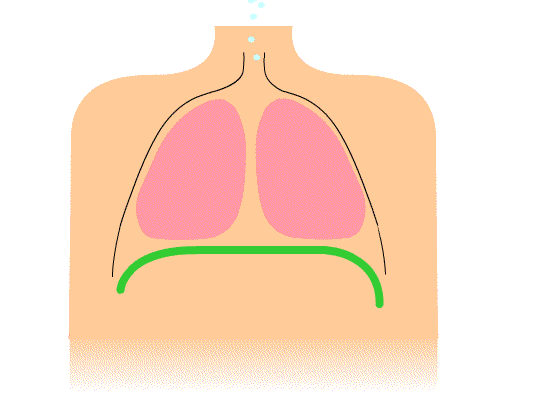Note that your final mark will not be saved in the system.
1.2.6 –1.2.10 The respiratory system Typeit
Type the correct answers into the spaces. Fill all the spaces before clicking ‘Check Answers!’

Breathing is split into two components – inspiration (inhalation) and expiration (exhalation).
During inhalation, air enters the body through the nose and mouth and travels through the windpipe (trachea). This is connected to the right and left lungs by the . These structures branch further into smaller tubes known as . At the end of these are many tiny balloon-shaped air sacs known as . During inhalation, these are enriched with oxygen and act as the site of gaseous exchange. This occurs due to several features that make them efficient in their role. These include a large surface , a short diffusion distance into the surrounding network of and a relatively high concentration of oxygen compared to the blood, creating a large concentration .
When you inhale, the volume of air in the lungs increases, resulting in lower pressure in the lungs. As you exhale, the volume of air in the lungs decreases, resulting in higher pressure in the lungs. This relationship between volume and pressure (known as Boyle's law) is facilitated by respiratory muscles.
During inspiration, the intercostal muscles and cause the ribs to move and outwards, increasing the of the thoracic cavity. During expiration, the intercostal muscles , allowing the ribs to move downwards and inwards, which the volume of the thoracic cavity.
The is a skeletal muscle that sits below the lungs and supports the mechanics of breathing. During inspiration, this contracts and to increase the volume in the thoracic cavity. During expiration, this muscle relaxes into its dome shape, decreasing the volume of the thoracic cavity.
The efficiency of the respiratory system can be monitored by the following values:
- Breathing rate – the number of breaths taken per minute
- volume – the volume of air expired per breath
- Minute ventilation – the volume of air expired per minute
- capacity – the maximum volume of air expired after maximal inhalation